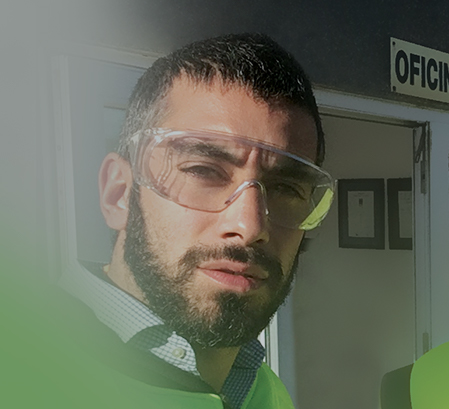How a renewable, recyclable box is made
The first commercial corrugated box was invented in 1817. More than 200 years later, boxes are still a part of our everyday lives, from keeping produce fresh to enabling us to order products from anywhere in the world.
The manufacturing of corrugated boxes continues to evolve. As we look to the future, we recognize our responsibility to enhance processes and improve our environmental and social impacts.
To better understand what goes into sourcing and making a corrugated box, let’s follow one from start to finish.

Corrugated boxes are made from new and recycled fiber, and our journey begins in the forest, largely in privately owned, responsibly managed forests.
Learn more about The Future of Forests.
90% of U.S. harvested timber
is from private land.1
84% of corrugated boxes are recycled in Europe.2


Trees and residual wood chips from sawmills are transported to a paper mill. The mill strips the bark from the trees and then cuts the trees into chips. Next, the wood chips are mixed with water and chemicals.


Our U.S. Supplier Diversity Program supports the economic wellbeing of our communities by working with businesses owned by women, minorities and other historically disadvantaged groups.
We expect all suppliers globally to comply with our Third Party Code of Conduct.


In the pulp mill, the wood chips, water and chemicals are cooked in a pressurized digester; this process separates the cellulose wood fiber from the trees’ other components, including lignin. The resulting wood pulp is then washed to remove the chemicals and lignin, transforming the wood chips into a slushy, naturally brown pulp.
About70% of our mill energy is generated from carbon-neutral biomass—bark and biomass residuals—rather than fossil fuels. Extra energy generated is sometimes sold to an energy company to provide energy for nearby neighborhoods.
SEE OUR 2030 SUSTAINABLE OPERATIONS GOAL



The pulp mixture now goes onto a wire screen that drains the water, forming a large sheet. Finally, the remaining water is removed as the sheet passes over dryers, and the end result is thick paper known as “containerboard.”
Around 93% of water used in the pulp and papermaking processes is returned back to the watershed after being reused as many as 10 times.
SEE OUR 2030 SUSTAINABLE OPERATIONS GOAL

The containerboard is smoothed and wound into a gigantic, continuous reel that is then cut into smaller rolls.



The unbleached containerboard is delivered from the paper mill to the box plant.
We are a partner of the U.S. EPA’s SmartWay program, a public-private initiative to reduce greenhouse gas emissions and air pollution created by freight transportation. 95% of our outbound ton-miles from North American mills are with SmartWay carriers.

Rolls of kraft paper go through a machine called a corrugator, where they are crimped and laminated with flat sheets to create corrugated board.

Our Vision 2030 goal is to reduce our
Scope 1, 2 and 3 GHG emissions by 35%
aligned with the best-available climate science
Learn More


The board is trimmed and cut into smaller sheets for printing and converting. Converting machines then print graphics, cut, fold and glue the sheets into the exact shapes and sizes needed by our customers.
International Paper is among the first North American pulp and paper producers to have our 35% GHG emissions reduction target approved by the
Science Based Targets initiative (SBTi)
Learn More

Nearly all trimmings and scrap paper are recovered and returned to the paper mill to be recycled into containerboard.

In 2021, 48% of our manufacturing waste was diverted from the landfill for beneficial use.
Learn More


The final printed box is shipped flat to a business that uses it to package products, eventually making its way to a retail store or to the consumer’s home.
92% of corrugated packaging
is recovered for recycling in the U.S.3
See Recycling and Beyond for more

And that’s how corrugated boxes are made!

Above all we care about people.
We strive for ethical, sustainable, and safe operations. In 2021, 94% of our sites operated without a serious injury, reinforcing the positive impact of our safety programs. Our goal is to have an injury-free workplace. See our Vision 2030 goal for Thriving People & Communities.

It’s more important for my colleagues to go home every day alive and well, and to be able to hug their children, rather than produce boxes quickly and bypass safety rules.
Giuseppe Valerio Labbia, Sales Manager
Catania, Italy
Sources
Additional Resources
Downloads, fact sheets, reports and more.
FAQs
Answers to frequently asked questions about forestry, paper, packaging and pulp
Does Using Paper Products Kill Trees?
How responsibly produced paper products actually keep forests forested
Learn MoreAre Recycled Paper Products Always Better for the Planet?
Recycling is only part of the sustainability equation
Learn More